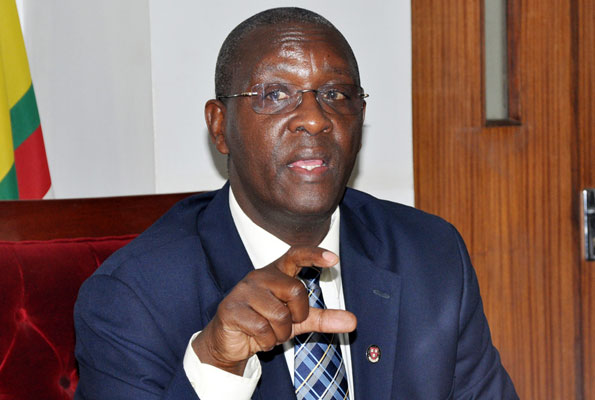The Ministry of Education and Sports has directed schools to refrain from allowing the use of handheld devices, including mobile phones until comprehensive guidelines are established. In August this year, the Ministry unveiled its Digital Agenda Strategy, which outlines a phased approach to integrating electronic tools and technologies into the educational system.
The strategy aims to enhance both learning and management of education and sports in a safe and controlled manner. Despite growing anticipation from students, parents, and educators for the inclusion of mobile devices in schools—especially with the rollout of the new lower secondary curriculum—the Ministry has emphasized that no devices should be used until official guidelines are finalized.
Dr. Denis Mugimba, the Ministry of Education spokesperson, stated that the development of Policy Standards and Guidelines is still underway. These guidelines will define the roles and responsibilities of all stakeholders, including schools, teachers, students, parents, internet service providers, and digital device suppliers. “Until the Policy Guidelines are officially in place, handheld mobile devices such as phones and tablets are not permitted for use by students on school premises,” the Commissioner stated.
He added that the path to digital integration in the education sector is lengthy and cannot be tackled all at once. It must be approached in a phased manner to ensure safety and adaptability to different contexts.
During the strategy launch, Education Minister Janet Museveni acknowledged that while ICTs and the internet offer valuable tools for improving education, the government must take clear steps to prevent technology from becoming a distraction. She stressed that even if mobile devices are permitted in schools, they should be set up to block access to unwanted and harmful content. According to her, all devices must comply with the standards and regulations established by bodies like NITA-U and be monitored to ensure students’ cybersecurity.
Patrick Muinda, the Assistant Commissioner in Charge of ICT, also said d that the development of these guidelines will take time, involving consultations with various stakeholders and thorough review processes, and urged the public to be patient. “It’s not a one-day event; we need to recognize that the process will be carried out in phases, step by step, due to the need to align many elements,” he said.
Muinda also emphasized that the public should understand that the digital agenda is a much broader strategy within the sector than just the issue of permitting mobile phone use, and it shouldn’t be limited to this aspect alone.
However, for Ronald Byaruhanga, a teacher at Mutanogo Primary School in Ntungamo, the digital agenda and the use of ICT in education seem irrelevant given the lack of ICT facilities in many Ugandan schools. “Those ICT initiatives are meant for schools in Kampala,” he remarked, adding that the reality in rural areas is quite different. Teachers there often lack computer skills, schools may not have electricity, and other challenges persist.
Byaruhanga says that before the ministry introduces such policies, it should focus on improving existing education policies, upgrading infrastructure, and ensuring better staffing with well-trained teachers.
Available information shows that the Ministry will need approximately 1.3 trillion Shillings over the next seven years to implement the digital agenda strategy with an estimated annual expenditure of 187.214 billion to meet the initiative’s objectives.
Of the annual budget, 1.19 billion is earmarked for the production and access to localized digital content, curriculum development, e-learning, and teacher training in technology-mediated teaching methods. Additionally, 185.9 billion will be invested each year to improve access to digital services and connectivity infrastructure.
-URN





